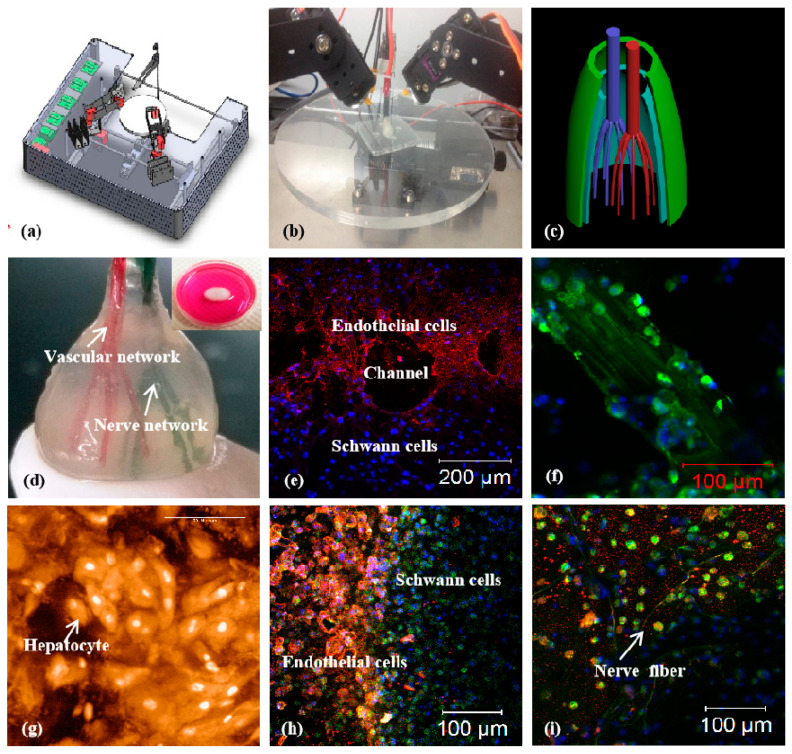Figure 14.
A combined four-nozzle organ three-dimensional (3D) printing technology created in Tsinghua University, Prof. Wang’ laboratory in 2013: (a) equipment of the combined four-nozzle organ 3D printer; (b) working state of the combined four-nozzle organ 3D printer; (c) a computer-aided design (CAD) model representing a large scale-up vascularized and innervated hepatic tissue; (d) a semi-ellipse 3D construct containing a poly (lactic acid-co-glycolic acid) (PLGA) overcoat, a hepatic tissue (made from hepatocytes in the gelatin/chitosan hydrogel), a branched vascular network (with a fully confluent endothelialized adipose-derived stem cells (ASCs) on the inner surface of the gelatin/alginate/fibrin hydrogel) and a hierarchical nervous (or innervated) network (made from Schwann cells in the gelatin/hyaluronate hydrogel), the maximal diameter of the semi-ellipse can be adjusted from 1 mm to 2 cm according to the CAD model; (e) a cross section of (d), showing the endothelialized ASCs and Schwann cells around a branched channel; (f) a large bundle of nerve fibers formed in (d); (g) hepatocytes underneath the PLGA overcoat; (h) an interface between the endothelialized ASCs and Schwann cells in (d); (i) some thin nerve fibers [164].

